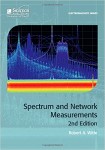 All RF Cafe Quizzes make great fodder for
employment interviews for technicians or engineers - particularly those who are
fresh out of school or are relatively new to the work world. Come to think of it,
they would make equally excellent study material for the same persons who are going
to be interviewed for a job. Bonne chance, Viel Glück, がんばろう,
buena suerte, удачи, in bocca al lupo, 행운을 빕니다,
ádh mór, בהצלחה, lykke til, 祝你好運.
Well, you know what I mean: Good luck! All RF Cafe Quizzes make great fodder for
employment interviews for technicians or engineers - particularly those who are
fresh out of school or are relatively new to the work world. Come to think of it,
they would make equally excellent study material for the same persons who are going
to be interviewed for a job. Bonne chance, Viel Glück, がんばろう,
buena suerte, удачи, in bocca al lupo, 행운을 빕니다,
ádh mór, בהצלחה, lykke til, 祝你好運.
Well, you know what I mean: Good luck!
Click here for the complete list of
RF Cafe Quizzes.
Note: Some material based on books have quoted passages.
 This
quiz is based on the information presented in
Spectrum and Network Measurements, 2nd Edition, by Robert A. Witte.
"This comprehensive treatment of frequency domain measurements successfully consolidates all the pertinent theory into one
text. It covers the theory and practice of spectrum and network measurements in electronic systems. It also provides thorough
coverage of Fourier analysis, transmission lines, intermodulation distortion, signal-to-noise ratio and S-parameters."
The book was graciously provided by Keysight Technologies.
Note: Some of these books are available as prizes in the monthly RF Cafe Giveaway.
1. Which type of FFT (Fast Fourier Transform) window should be used when measuring a fast transient
signal?
a) Exponential b) Uniform c) Flat top d) Hanning
2. Which statement regarding the DFT (Discrete Fourier Transform) is true?
a) The DFT is only an approximation of a Fourier transform b) The DFT is more precise than a Fourier
transform c) The DFT contains more data points than a Fourier transform d) The DFT and Fourier
transforms are unrelated
3. When might a non-zero coherence (between input and output signals) measurement be false?
a) When the signals are exactly 360° out of phase b) When a third signal affects both the input and
output signals c) When both signals are equal in amplitude d) When the input and output signals ate orthogonal
4. Where is the video filter of a swept spectrum analyzer located in the signal chain?
a) At the front end b) After the first bandpass filter c) After the first downconversion d)
Between the detector and the display
5. Where, if at all, on the spectrum analyzer display does LO (local oscillator) feedthrough show
up?
a) At 0 Hz (DC) b) At the LO frequency c) At the input signal frequency d) At the
output signal frequency
6. What is the purpose of the 'Zero Span' function on a spectrum analyzer?
a) It filters out all signals so that the instrument characteristics can be determined b) It switches
in an ideal filter of 0 Hz bandwidth to show only the center frequency c) It shows the amplitude characteristic
of a specific frequency over time d) It is an archaic function only used in vacuum tube analyzers to compensate
for grid noise
7. What is the term given for a long-term frequency shift?
a) Drift b) Phase noise c) Flicker noise d) Shot noise
8. What is the term given for a short-term frequency shift?
a) Drift b) Phase noise c) Flicker noise d) Shot noise
9. Spectrum analyzer predetection filtering reduces which aspect of noise?
a) Difference between output and input signal noise b) Sum of output and input signal noise c)
Noise present in the output signal d) Noise present in the input signal
10. What is the rule-of-thumb swept spectrum analyzer correction factor used for noise power measurements?
a) No correction is necessary b) 1 dB c) 2.5 dB d) The number is too variable for a
rule-of-thumb number
Need some help? Click here for the
answers and explanations.
|










